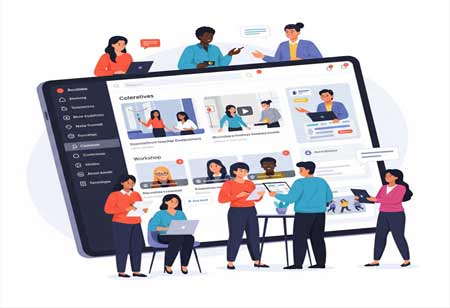THANK YOU FOR SUBSCRIBING
Be first to read the latest tech news, Industry Leader's Insights, and CIO interviews of medium and large enterprises exclusively from Education Technology Insights
Elevating K-12 Education: Harnessing Technology for Engaging Learning Experiences
Adaptive learning platforms, AI-driven assessments, and online resources provide customized learning experiences based on students’ strengths and weaknesses.

By
Education Technology Insights | Thursday, October 09, 2025
Stay ahead of the industry with exclusive feature stories on the top companies, expert insights and the latest news delivered straight to your inbox. Subscribe today.
Fremont, CA: Technology is transforming K–12 education, creating dynamic and engaging learning environments. Simply introducing digital tools is not enough. Schools must adopt effective strategies to ensure that technology enhances teaching and learning. By integrating well-designed instructional practices, educators can maximize the benefits of digital learning and equip students with essential skills for the future. Many educators struggle to incorporate technology effectively due to a lack of training.
The strategy ensures that each student receives the support they need to succeed. Engaging students through interactive digital tools enhances learning outcomes. Gamification, virtual simulations, and multimedia content make lessons more engaging and immersive. Interactive whiteboards, collaborative software, and educational apps encourage student participation and make learning more enjoyable. By incorporating these tools, teachers can increase student engagement and motivation. Encouraging collaboration through technology fosters critical thinking and teamwork skills. Cloud-based tools and discussion forums support real-time collaboration, even in remote learning environments.
Ensuring Digital Equity and Access
Ensuring digital equity is crucial for effective technology-enabled instruction. Not all students have access to high-speed internet or personal devices at home. Schools must address these disparities by providing loaner devices, setting up Wi-Fi hotspots, or creating community technology hubs. Implementing blended learning models, where students can access digital resources in class and at home, ensures that all learners benefit from technology-enhanced instruction.
Implementing formative assessments through technology allows teachers to track student progress more effectively. Digital assessment tools provide real-time feedback, helping educators identify areas where students need additional support. Online quizzes, interactive polls, and AI-driven grading systems streamline the assessment process and give teachers valuable insights into student performance. This approach enables data-driven decision-making and improves instructional strategies.
Cultivating Digital Citizenship and Leadership
Fostering a culture of digital citizenship ensures responsible and ethical use of technology. Students increasingly rely on digital tools, so they must learn to navigate the online world safely. Schools should integrate digital literacy programs that teach students about cybersecurity, privacy, and responsible online behavior. Encouraging critical thinking about online information and ethical technology use helps students develop skills for lifelong digital engagement.
Technology-enabled instruction thrives when schools provide strong leadership and a clear vision. Administrators must support technology integration by investing in reliable infrastructure, setting clear expectations, and promoting a culture of innovation. Encouraging collaboration between educators, parents, and policymakers ensures that technology is a valuable asset in education. With the right strategies, K12 schools can leverage technology to create meaningful and compelling learning experiences that prepare students for future success.







